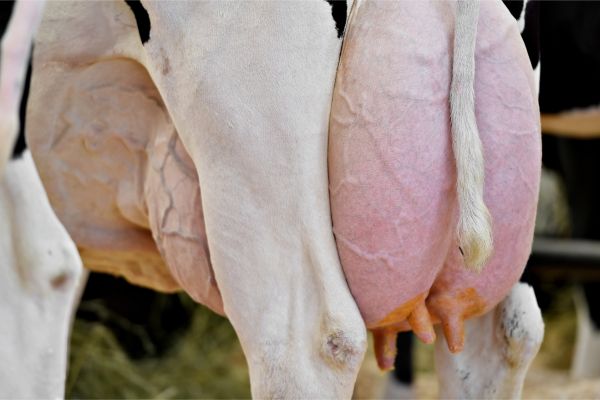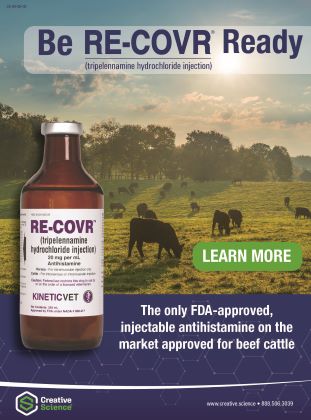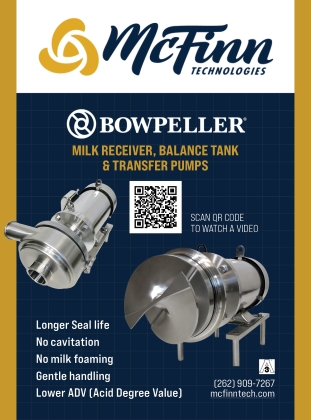Maintaining Udder Health with Teat Dips and Sealants

While parlor routines often focus on lactating cows, overall teat health, whether we are dealing with lactating or dry cows, should always be a top priority. Lactating cows rely on proper pre- and post-dipping for hygiene, while dry cows benefit from internal sealants and continued cleanliness. Framing udder care as a continuous process, not just tied to active milking, can help improve your management strategy.
It may be easy to overlook, but cows going into the dry off period are very susceptible to mastitis infection. That’s why ongoing udder care and support requires a layered approach that combines effective teat dips, appropriate sealants and sound parlor hygiene practices to protect both cow health and milk quality.
Udder Health Basics
Teats are at the crux of udder health since they are a direct pathway into the mammary system. And because they are lowest to the ground with an orifice that takes 30 minutes to naturally seal after milking, they need to be kept as clean as possible.
Flaming: Routine flaming of the udder floor to remove hair can help reduce the bacterial exposure at the teat ends.
Pen management: Believe it or not managing the pens and avoiding crowding can help with udder health. The more animals in a pen or sharing freestalls, the more likely they are to get stepped on, kicked or sucked on by herdmates. It isn’t super uncommon for a teat end to get stepped on or smashed causing lifelong damage.
Freestall cleanliness: Keeping the freestall area clean, both the alleys and the stalls, helps reduce manure from being flung on the udder.
Dry cow care: The same care and consideration needs to be given to dry cows. Even if they are not being milked, their teat ends are still a point of entry and should be laying on clean, dry bedding.
Managing the milker pressure and inflations (make sure they are the right size) also benefits udder health. Pressure that is too high or inflations that are poorly fitted can cause teat ends to split, making them a constantly open “wound” for bacteria to enter into the canal freely. Some research has shown that damaged and cracked teat ends have a risk nearly twice as high for picking up infections during the dry off period compared to those that are intact.
“Monitoring milking equipment and milking practices can ensure good teat end condition at the end of lactation,” says the Pennsylvania State University bulletin “Preventing Dry Cow Mastitis” by extension educator Daniela Roland.
Having a pre- and post- dip protocol can help with the management of the udder.
“Cows are most susceptible to new mastitis infections during the first two weeks of the dry period and the two weeks both before and after calving,” writes Roland. “Susceptibility is increased because the mammary gland is undergoing a transition either from or to a state of active milk synthesis and secretion.”
Choosing Dips and Sealants
Effective teat dips and sealants create a protective barrier that helps prevent bacterial invasion of the teat canal while also supporting overall udder hygiene before and after milking. However, even the best products cannot replace consistent, proper management.
One crucial post-milking practice is keeping cows on their feet to allow the teat ends time to close, reducing the risk of infection. A good post-dip that is applied with full, even coverage further decreases the chances of bacteria entering the teat canal.
Teats that are split, damaged, or frequently exposed to harsh conditions are at a higher risk of developing mastitis and other complications, often shortening a cow’s productive life.
Climate also plays a significant role in teat health. In humid regions, products with added moisturizers can help prevent chapping, while in cold climates, quick-drying or powdered dips may reduce the risk of frostbite during winter milking routines. And some producers simply maintain a protocol to switch products according to the season.
It’s also important not to overlook the dry period. This phase isn’t merely downtime, it’s a crucial window for the udder to rest and prepare ahead of the next lactation cycle.
As Roland notes, “The risk of common transition cow disorders such as milk fever, retained placenta, displaced abomasum, and clinical mastitis can be minimized with proper dry cow management.”
Internal teat sealants are especially valuable during dry off. These products form a physical barrier inside the teat canal, offering protection until the cow’s natural keratin plug develops.
Ultimately, teat care strategies should reflect each farm’s size, environment, and unique needs. A method that works well on a small operation may not translate to a larger herd for financial or practical reasons. Season may also influence which products or techniques are most effective at a given time.
Playing a Long-Term Game
Supportive udder health with proper teat dips and sealants pays dividends, not only in daily milk production but also in the long-term productivity and longevity of your cows. Healthy teats support a full, productive 305-day lactation and reduce the risk of mastitis related setbacks.
Nutrition, genetics, and overall management all play vital roles in lactation success. An udder that is compromised or neglected can quickly derail a cow’s lactation or even the rest of her productive life. After all, the udder is the money maker so treat it like one.
By Jaclyn Krymowski for American Dairymen
Click here for more information: https://americandairymen.com/



